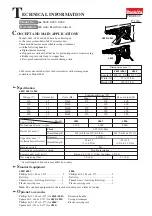
Installation and Operation
Sorensen DCS Series 1kW and 1.2kW Supplies
2-10
M362500-01 Rev K
2.6.4
Remote Sensing
The use of remote sensing permits the regulation point of the power supply to be shifted from
the output terminals to the load or other distribution terminals thereby automatically
compensating for the voltage losses in the leads supplying the load (provided these losses do
not exceed 4V/line [0.5V/line for the DCS 8-125 and DCS 10-100 models]). For example, with
the voltmeter reading 10.0 volts and the sense lines connected directly to the load, the load
voltage will remain regulated at 10.0 volts regardless of the voltage drops in the power leads
and variations in the load current.
On 8V, 10V, 20V, 33V, 40V, 50V, 60V, 80V, and 100V models, the positive sense connection is
available at pin 13 of connector J3 and the return sense connection is available at pin 12. For
local sensing (regulation at the power supply output terminals) the sense pins are connected to
pins 25 (positive output) and 24 (return) of connector J3. For remote sensing the local
operation jumpers are removed and pins 13 and 12 are connected directly to the positive and
negative terminals of the load.
On 150, 300 and 600V models, the sense connections are available through the output
connector (see
Figure 2-1
for the exact pin out). On these models, no sense line jumpers are
required for local operation.
Sense wires can be any size (24AWG or larger) but in high noise environments or when the
lowest possible power supply ripple is required, sense wires must be twisted and/or shielded.
NOTE
On 8V–100V models, the sense leads must always be connected, either
for remote or local sensing. Operation of the supply with the sense leads
disconnected will cause the output to fall to zero or to be unregulated.
CAUTION
Never
use the sense connections without the normal power lead connections
to the output terminals. Avoid reversing positive and negative sense lead
connections, this could result in damage to the load.
















































